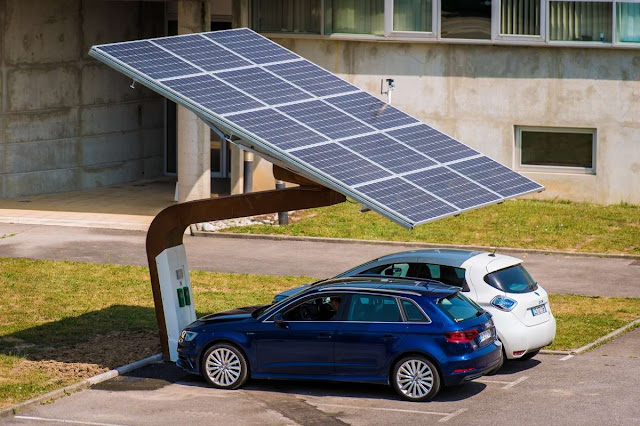The Rise of EV Solar Modules: Powering the Future of Transportation
 |
| EV solar modules |
Electric vehicles (EVs) have emerged as a sustainable and
eco-friendly alternative to traditional gasoline-powered vehicles, driving a
global shift towards cleaner transportation solutions. A crucial component
powering this transition is the integration of solar modules into EVs,
harnessing the sun's energy to fuel these vehicles efficiently.
Harnessing
Solar Energy for EVs
EV solar modules are designed to capture sunlight and convert
it into electricity, supplementing the vehicle's battery power. This innovative
technology allows EVs to recharge while on the move or parked, extending their
range and reducing dependency on external charging infrastructure. By harnessing
clean and renewable solar energy, EVs equipped with solar modules contribute to
reducing greenhouse gas emissions and combating climate change.
Integration
and Advancements
The integration of solar modules into EV Solar
Modules involves incorporating photovoltaic cells onto the vehicle's
surface, such as the roof, hood, or side panels. Advances in solar cell
efficiency, lightweight materials, and aerodynamic designs have made it
possible to maximize solar energy capture without compromising vehicle
aesthetics or performance. This seamless integration enhances the overall
appeal and functionality of EVs equipped with solar modules.
Extending
Range and Efficiency
One of the primary benefits of EV solar modules is their
ability to extend the vehicle's range and improve energy efficiency. Solar
energy harvested during daytime driving or parking periods can supplement the
battery's charge, reducing the need for frequent recharging and increasing the
EV's overall mileage. This extended range is particularly advantageous for
long-distance travel and enhances the practicality of EVs for everyday use.
Sustainable
Mobility Solutions
EV solar modules align with the growing demand for
sustainable mobility solutions, offering consumers an environmentally conscious
alternative to traditional vehicles. By reducing reliance on fossil fuels and
minimizing carbon emissions, EVs equipped with solar modules contribute to
cleaner air, reduced environmental impact, and a more sustainable
transportation infrastructure. This shift towards greener mobility is essential
for addressing climate change and promoting a healthier planet.
Challenges
and Opportunities
Despite the numerous benefits, EV solar modules also face
challenges and opportunities for further development. Key challenges include
optimizing solar cell efficiency, balancing cost-effectiveness with
performance, addressing durability and reliability concerns, and integrating solar
technology into various types of EVs, including passenger cars, commercial
vehicles, and public transportation fleets. Overcoming these challenges
presents opportunities for innovation, collaboration, and market growth within
the EV solar modules sector.
Future
Outlook and Adoption
The future outlook for EV solar modules is promising, with
ongoing research, technological advancements, and investments driving
innovation in this field. As solar cell efficiency improves, costs decline, and
consumer awareness of sustainable transportation increases, the adoption of EVs
equipped with solar modules is expected to rise. This trend is reinforced by
government incentives, regulations promoting clean energy adoption, and the
automotive industry's commitment to sustainable practices.
EV solar modules represent a pivotal innovation in the realm
of clean transportation, combining the benefits of electric vehicles with
renewable solar energy. From extending range and improving energy efficiency to
promoting sustainable mobility solutions, EVs equipped with solar modules play
a crucial role in shaping a cleaner, greener future for transportation. As
technology continues to evolve and adoption rates increase, EV solar modules
are poised to become an integral part of the global automotive landscape,
driving us towards a more sustainable and environmentally conscious mobility
ecosystem.



Comments
Post a Comment